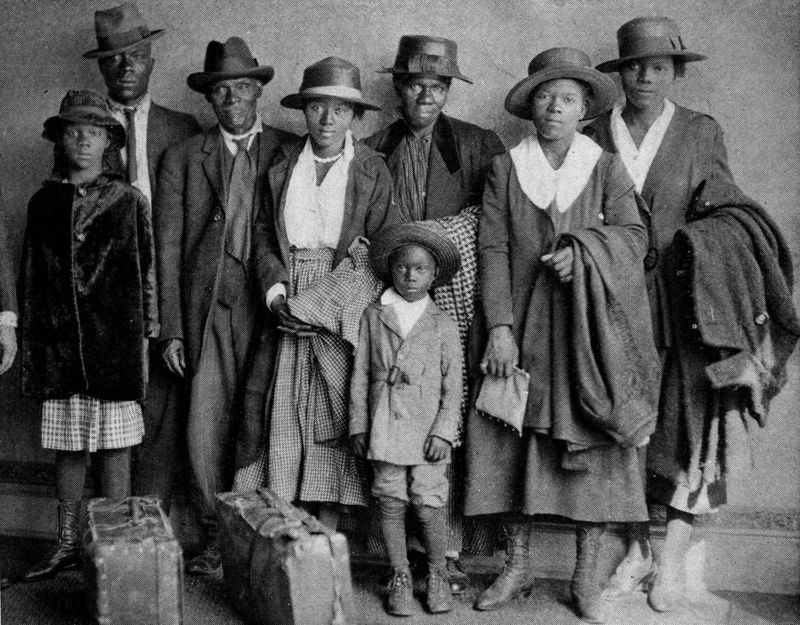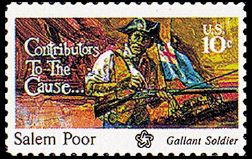|
Fayetteville, Georgia
Fayetteville ( ; locally ) is a city in and the county seat of Fayette County, Georgia, United States. As of the 2020 census, the city had a population of 18,957, up from 15,945 at the 2010 census. Fayetteville is located south of downtown Atlanta. History Fayetteville was founded in 1822 as the seat of the newly formed Fayette County, organized by European Americans from territory ceded by force the Creek people under a treaty with the United States during the early period of Indian removal from the Southeast. Both city and county were named in honor of the Revolutionary War hero the French Marquis de Lafayette. Fayetteville was incorporated as a town in 1823 and as a city in 1902. The area was developed for cotton plantations, with labor provided by enslaved African Americans, who for more than a century comprised the majority of the county's population. Fayetteville became the trading town for the agricultural area. In the first half of the 20th century, as agricultu ... [...More Info...] [...Related Items...] OR: [Wikipedia] [Google] [Baidu] |
City
A city is a human settlement of a substantial size. The term "city" has different meanings around the world and in some places the settlement can be very small. Even where the term is limited to larger settlements, there is no universally agreed definition of the lower boundary for their size. In a narrower sense, a city can be defined as a permanent and Urban density, densely populated place with administratively defined boundaries whose members work primarily on non-agricultural tasks. Cities generally have extensive systems for housing, transportation, sanitation, Public utilities, utilities, land use, Manufacturing, production of goods, and communication. Their density facilitates interaction between people, government organisations, government organizations, and businesses, sometimes benefiting different parties in the process, such as improving the efficiency of goods and service distribution. Historically, city dwellers have been a small proportion of humanity overall, bu ... [...More Info...] [...Related Items...] OR: [Wikipedia] [Google] [Baidu] |
Latino (U
Latino or Latinos may refer to: People Demographics * Latino (demonym), a term used in the United States for people with cultural ties to Latin America * Hispanic and Latino Americans in the United States ** Hispanic and Latino (ethnic categories) * The people or cultures of Latin America; ** Latin Americans Given name * Latino Galasso, Italian rower * Latino Latini, Italian scholar and humanist of the Renaissance * Latino Malabranca Orsini, Italian cardinal * Latino Orsini, Italian cardinal Other names * Joseph Nunzio Latino, Italian American Roman Catholic bishop * Latino (singer), Brazilian singer Linguistics * Latino-Faliscan languages, languages of ancient Italy * '' Latino sine flexione'', a constructed language * Mozarabic language, varieties of Ibero-Romance * A historical name for the Judeo-Italian languages Geography * Lazio region in Italy, anciently inhabited by the Latin people who founded the city of Rome. Media and entertainment Music * ''Latino'' ... [...More Info...] [...Related Items...] OR: [Wikipedia] [Google] [Baidu] |
Hispanic (U
The term Hispanic () are people, cultures, or countries related to Spain, the Spanish language, or broadly. In some contexts, especially within the United States, "Hispanic" is used as an ethnic or meta-ethnic term. The term commonly applies to Spaniards and Spanish-speaking ( Hispanophone) populations and countries in Hispanic America (the continent) and Hispanic Africa (Equatorial Guinea and the disputed territory of Western Sahara), which were formerly part of the Spanish Empire due to colonization mainly between the 16th and 20th centuries. The cultures of Hispanophone countries outside Spain have been influenced as well by the local pre-Hispanic cultures or other foreign influences. There was also Spanish influence in the former Spanish East Indies, including the Philippines, Marianas, and other nations. However, Spanish is not a predominant language in these regions and, as a result, their inhabitants are not usually considered Hispanic. Hispanic culture is ... [...More Info...] [...Related Items...] OR: [Wikipedia] [Google] [Baidu] |
Pacific Islander (U
Pacific Islanders, Pasifika, Pasefika, Pacificans, or rarely Pacificers are the peoples of the Pacific Islands. As an ethnic/racial term, it is used to describe the original peoples—inhabitants and diasporas—of any of the three major subregions of Oceania ( Melanesia, Micronesia, and Polynesia) or any other island located in the Pacific Ocean. Melanesians include the Fijians (Fiji), Kanaks (New Caledonia), Ni-Vanuatu (Vanuatu), Papua New Guineans (Papua New Guinea), Solomon Islanders (Solomon Islands), West Papuans (Indonesia's West Papua) and Moluccans (Indonesia's Maluku Islands). Micronesians include the Carolinians ( Caroline Islands), Chamorros ( Guam and Northern Mariana Islands), Chuukese ( Chuuk), I-Kiribati ( Kiribati), Kosraeans ( Kosrae), Marshallese ( Marshall Islands), Nauruans auru Palauans ( Palau), Pohnpeians ( Pohnpei), and Yapese ( Yap). Polynesians include the New Zealand Māori (New Zealand), Native Hawaiians (Hawaii), Rapa N ... [...More Info...] [...Related Items...] OR: [Wikipedia] [Google] [Baidu] |
Asian (U
Asian may refer to: * Items from or related to the continent of Asia: ** Asian people, people in or descending from Asia ** Asian culture, the culture of the people from Asia ** Asian cuisine, food based on the style of food of the people from Asia ** Asian (cat), a cat breed similar to the Burmese but in a range of different coat colors and patterns * Asii (also Asiani), a historic Central Asian ethnic group mentioned in Roman-era writings * Asian option, a type of option contract in finance * Asyan, a village in Iran See also * * * East Asia * South Asia * Southeast Asia Southeast Asia is the geographical United Nations geoscheme for Asia#South-eastern Asia, southeastern region of Asia, consisting of the regions that are situated south of China, east of the Indian subcontinent, and northwest of the Mainland Au ... * Asiatic (other) {{disambiguation ... [...More Info...] [...Related Items...] OR: [Wikipedia] [Google] [Baidu] |
Native American (U
Native Americans or Native American usually refers to Native Americans in the United States Native Americans (also called American Indians, First Americans, or Indigenous Americans) are the Indigenous peoples of the Americas, Indigenous peoples of the United States, particularly of the Contiguous United States, lower 48 states and A .... Related terms and peoples include: Ethnic groups * Indigenous peoples of the Americas, the pre-Columbian peoples of North, South, and Central America and their descendants * Indigenous peoples in Canada ** First Nations in Canada, Canadian Indigenous peoples who are neither Inuit nor Métis ** Inuit, Indigenous peoples inhabiting the Arctic and subarctic regions of Greenland, Labrador, Quebec, Nunavut, the Northwest Territories, and Alaska. ** Métis in Canada, specific cultural communities who trace their descent to early communities consisting of both First Nations people and European settlers * Indigenous peoples of Costa Rica * Indi ... [...More Info...] [...Related Items...] OR: [Wikipedia] [Google] [Baidu] |
African American (U
African Americans, also known as Black Americans and formerly also called Afro-Americans, are an Race and ethnicity in the United States, American racial and ethnic group that consists of Americans who have total or partial ancestry from any of the Black people, Black racial groups of Africa. African Americans constitute the second largest ethno-racial group in the U.S. after White Americans. The term "African American" generally denotes descendants of Slavery in the United States, Africans enslaved in the United States. In 2023, an estimated 48.3 million people self-identified as Black, making up 14.4% of the country’s population. This marks a 33% increase since 2000, when there were 36.2 million Black people living in the U.S. African-American history began in the 16th century, with Africans being sold to Atlantic slave trade, European slave traders and Middle Passage, transported across the Atlantic to Slavery in the colonial history of the United States, the Western He ... [...More Info...] [...Related Items...] OR: [Wikipedia] [Google] [Baidu] |
White (U
White is the lightest color and is achromatic (having no chroma). It is the color of objects such as snow, chalk, and milk, and is the opposite of black. White objects fully (or almost fully) reflect and scatter all the visible wavelengths of light. White on television and computer screens is created by a mixture of red, blue, and green light. The color white can be given with white pigments, especially titanium dioxide. In ancient Egypt and ancient Rome, priestesses wore white as a symbol of purity, and Romans wore white togas as symbols of citizenship. In the Middle Ages and Renaissance a white unicorn symbolized chastity, and a white lamb sacrifice and purity. It was the royal color of the kings of France as well as the flag of monarchist France from 1815 to 1830, and of the monarchist movement that opposed the Bolsheviks during the Russian Civil War (1917–1922). Greek temples and Roman temples were faced with white marble, and beginning in the 18th c ... [...More Info...] [...Related Items...] OR: [Wikipedia] [Google] [Baidu] |
Great Migration (African American)
The Great Migration, sometimes known as the Great Northward Migration or the Black Migration, was the movement of six million African Americans out of the rural Southern United States to the urban Northeast, Midwest, and West between 1910 and 1970. It was substantially caused by poor economic and social conditions due to prevalent racial segregation and discrimination in the Southern states where Jim Crow laws were upheld. In particular, continued lynchings motivated a portion of the migrants, as African Americans searched for social reprieve. The historic change brought by the migration was amplified because the migrants, for the most part, moved to the then-largest cities in the United States (New York City, Chicago, Detroit, Los Angeles, San Francisco, Philadelphia, Cleveland, and Washington, D.C.) at a time when those cities had a central cultural, social, political, and economic influence over the United States; there, African Americans established culturally influent ... [...More Info...] [...Related Items...] OR: [Wikipedia] [Google] [Baidu] |
Slavery In The United States
The legal institution of human chattel slavery, comprising the enslavement primarily of List of ethnic groups of Africa, Africans and African Americans, was prevalent in the United States of America from its founding in 1776 until 1865, predominantly in the Southern United States, South. Slavery was established throughout European colonization in the Americas. From 1526, during the early Slavery in the colonial history of the United States, colonial period, it was practiced in what became British America, Britain's colonies, including the Thirteen Colonies that formed the United States. Under the law, an enslaved person was treated as property that could be bought, sold, or given away. Slavery lasted in about half of U.S. states until Thirteenth Amendment to the United States Constitution, abolition in 1865, and issues concerning slavery seeped into every aspect of national politics, economics, and social custom. In the decades after the end of Reconstruction era, Recons ... [...More Info...] [...Related Items...] OR: [Wikipedia] [Google] [Baidu] |




